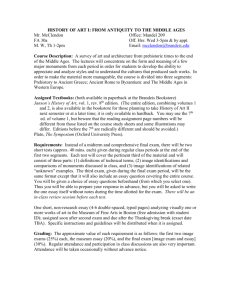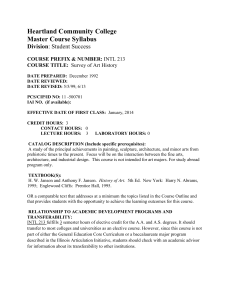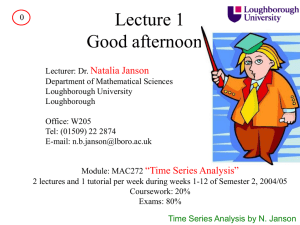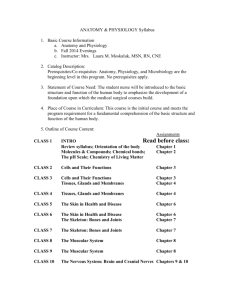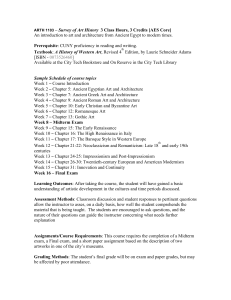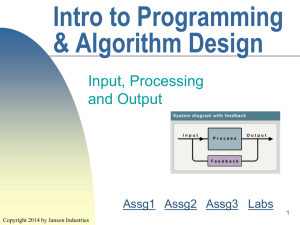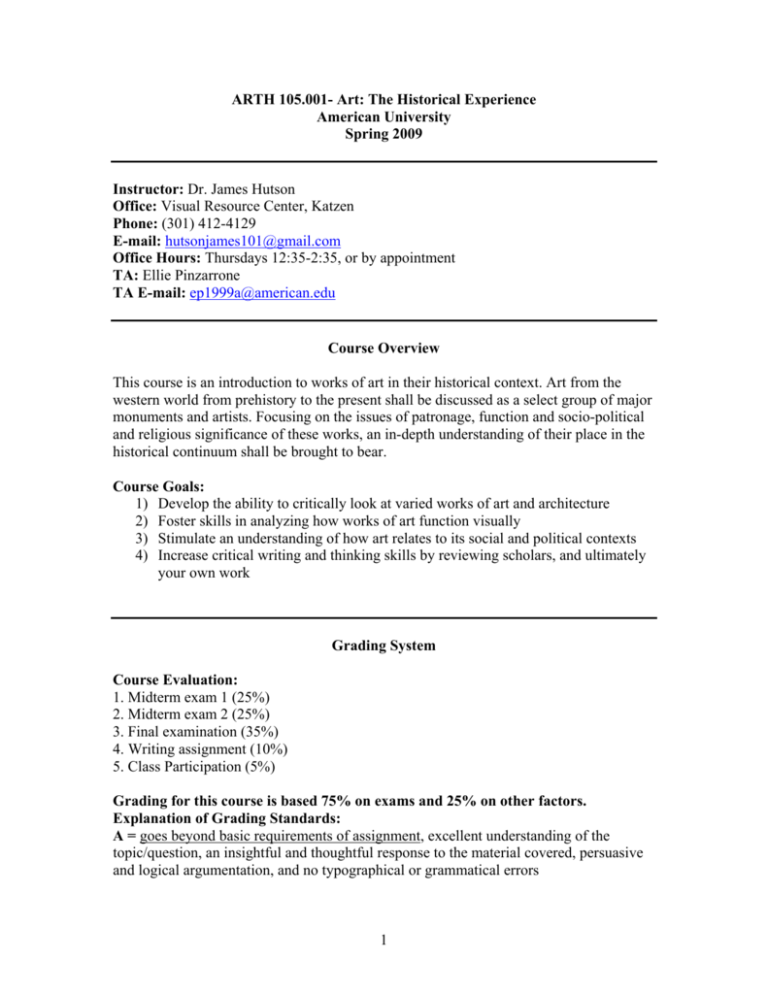
ARTH 105.001- Art: The Historical Experience
American University
Spring 2009
Instructor: Dr. James Hutson
Office: Visual Resource Center, Katzen
Phone: (301) 412-4129
E-mail: hutsonjames101@gmail.com
Office Hours: Thursdays 12:35-2:35, or by appointment
TA: Ellie Pinzarrone
TA E-mail: ep1999a@american.edu
Course Overview
This course is an introduction to works of art in their historical context. Art from the
western world from prehistory to the present shall be discussed as a select group of major
monuments and artists. Focusing on the issues of patronage, function and socio-political
and religious significance of these works, an in-depth understanding of their place in the
historical continuum shall be brought to bear.
Course Goals:
1) Develop the ability to critically look at varied works of art and architecture
2) Foster skills in analyzing how works of art function visually
3) Stimulate an understanding of how art relates to its social and political contexts
4) Increase critical writing and thinking skills by reviewing scholars, and ultimately
your own work
Grading System
Course Evaluation:
1. Midterm exam 1 (25%)
2. Midterm exam 2 (25%)
3. Final examination (35%)
4. Writing assignment (10%)
5. Class Participation (5%)
Grading for this course is based 75% on exams and 25% on other factors.
Explanation of Grading Standards:
A = goes beyond basic requirements of assignment, excellent understanding of the
topic/question, an insightful and thoughtful response to the material covered, persuasive
and logical argumentation, and no typographical or grammatical errors
1
B = completes requirements of assignment efficiently, demonstrates competent
understanding of the topic/question, adequate grasp of information, logical argument,
possibly a few organizational problems or grammatical errors, but shows overall
coherence in discussion and has few or no problems with grammar or typing
C = meets minimum requirements of the assignment but reveals superficial preparation
through problems with factual information (omissions or errors) and logical argument,
and may have grammatical and/or typographical errors
D = inadequate work, does not follow directions, poor use of resources, serious writing
problems
F = work not turned in or does not match assignment requirements
Fulfilling the General Education Requirements: Curricular Area 1
ARTH 105, “Art: The Historical Experience,” is one of four foundation courses in AU’s
General Education program Curricular Area 1, Cluster 2: Understanding Creative Works.
After taking ARTH 105G, you can complete the Area 1 Gen Ed requirement with any
one of the following second-level courses:
ANTH-225G
ARTH-210G
LIT 225G
LIT-245G
LIT 270G
PERF-215G
PERF-220G
PHIL-230G
Language and Human Experience
Modern Art: 19th and 20th Centuries
The African Writer
The Experience of Poetry
Transformations of Shakespeare
Opera on Stage and Film
Reflections of American Society on Stage and Screen
Meaning and Purpose in the Arts
Course Requirements
Required Text:
Janson’s History of Art: the Western Tradition 7th ed. (Prentice Hall, 2007).
Available at the AU bookstore, or at www.amazon.com. Readings from this text are
detailed below for each week of class.
Recommended:
You may also want to purchase a copy of Sylvan Barnet’s Short Guide to Writing About
Art; any edition will do. This will be very helpful in writing the essay required for this
course. There are hundreds of inexpensive copies of this classic guidebook available from
internet book-vendors (such as amazon.com).
Exams:
The term tests and final examination will be equally weighted and similarly composed.
For each there will be a mix of slide identification, slide comparison and essay questions.
2
You will be responsible for knowing all images shown in class, which are also in your
text. A make-up test will be given within a week of the scheduled tests, but only for those
students who have convincing documentation of a medical or other personal problem will
be permitted to write make-up tests. If a student misses the final exam, they must contact
the instructor immediately to schedule a makeup.
Makeup policy for Exams:
If a student is unable to take an exam at the scheduled time due to a cause that is either
self or dependant, makeups will be offered under the following conditions: 1) the cause
was beyond the student’s control (i.e. sickness, accidents, deaths in the family); 2) the
student contact the instructor within one week of missing said test to schedule a makeup;
3) the makeup must be within one week of the original dated test; 4) the student will be
given one chance to makeup the exam at a pre-arranged time, and if the student fails to do
so the grade for that assignment will be recorded as a zero.
Handouts:
Prior to each class a handout detailing the pertinent works of art, important historical
figures associated with the works’ creation, as well as any additional specialized
vocabulary shall be available on Blackboard.
Notetaking:
It is extremely important to take detailed notes in this course because our discussions will
add both concepts and detail to the information in your readings. Student’s exams shall
be improved if they demonstrate an internalization of this material. If assistance is
required, or more information regarding proper notetaking is desired, please see the
instructor. Also, students with special needs may audiotape the lectures if they consult
first with the instructor. Even if the lectures are recorded with the instructor’s permission,
you should still take careful notes of each class.
Recording Lectures:
If you wish to make an audio recording of the lectures during class time ensure that you
have the instructor’s permission. It is unlawful to make such a recording without
permission, written or verbal. Also, even if you have recordings of the lectures, you
should still take careful written notes in addition to this electronic or analog format.
Academic Integrity Code:
It is expected that students will conform to all regulations of the university, and of the
classes in which they are registered. It is further expected that all examinations, tests,
written papers, and other assignments will be completed according to the standards set
forth in the Academic Integrity Code, available at:
www.american.edu/academics/integrity/index.htm.
Writing Assignment:
There will be a four to five page comparison paper due for this course. It will not be a
research paper, but rather a paper describing and comparing two works of art found in the
collections of the National Gallery of Art. Detailed instructions will be handed out in due
3
course. Extensions will not be granted for the paper except for those with documentation
of medical or other personal problems. Taking too many courses in one semester, in
addition to extracurricular activities does not constitute a valid reason for extension.
Those handing the paper in late without an extension will be docked 5 percentage points
per day, including weekends.
Late Papers:
In addition to the previously stated requirements, all late papers must be turned in to
either the instructor or their mailbox in printed form. Electronic submissions will only be
accepted with the instructor’s permission.
The Writing Center
The writing center provides opportunities for undergraduates to improve their writing
skills. Trained tutors are available to assist you through all the stages of the writing
process. Writers of all levels can benefit from the training available at the Writing Center
in Battelle-Tompkins 228; and to schedule appointments please call (202) 885-2991.
Extra-Credit Assignments:
There will be no extra-credit assignments for the course. If you attend all of the class
meetings, do the accompanying readings in the text, and take thorough notes, then you
will have no difficulty excelling. There will be no exceptions to this policy!
Attendance Policy:
The material presented will cross several centuries and as such it will be easy to become
lost. If you are going to miss class, please copy someone’s notes who will attend the
class. Students will be excused for an absence due only to illness (self or dependent),
religious observances, participation in university activities at the request of university
authorities, and compelling circumstances beyond the student’s control.
Accommodations for Students with Disabilities:
Appropriate accommodations will be provided for students with documented disabilities.
In order to ascertain what accommodations may be needed, please bring them to my
attention as early as possible. Also the student is responsible for notifying the university
of such disabilities by contacting Disability Support Services in Mary Graydon Center
206 at (202) 855-3360, or at asc@american.edu. If alternative measures are required for
testing, they must be brought to my attention two weeks prior to each examination.
Blackboard:
This web-based course system gives access to an online copy of the syllabus, handouts,
Power Points and required articles not in the textbook. To reach the Blackboard site, go
to https://blackboard.american.edu, which will give you the log-in page. Log in with your
AU ID and password. If you have problems accessing the site or materials please contact
me at jhutson@umd.edu .
4
Museums:
Washington D.C. Museums. A Ross Guide is an excellent source of information that is
available at bookstores. Current exhibitions are also listed in the Friday edition of the
Washington Post called the Weekend Section.
Museums on the Mall:
The National Gallery of Art, West Wing (pre-20th century) and East Wing (20th century)
and Garden between 7th and 4th on Constitution Ave. NW (north side of the Mall)
The National Museum of African Art, 950 Independence Ave. SW
The Sackler and Freer Museums of Asian Art, 950 Independence Ave. SW
The Hirshorn Museum and Sculpture Garden, 8th and Independence SW (modernist and
contemporary painting, sculpture, and installation art)
Surrounding Museums:
The Art Museum of the Americas, 201 Eighteenth Street NW
The B’nai Brith Klutznick Museum, 1640 Rhode Island Ave. NW (Jewish Art)
The Corcoran Gallery, 17th Street and New York Ave. NW (American and European Art,
contemporary art; facsimiles of the Parthenon frieze sculptures are exhibited
around the central court area on the main floor)
Dumbarton Oaks Collection and Gardens, 1703 32nd Street NW (Georgetown) (Byzantine
and Pre-Columbian Art)
The Smithsonian American Art Museum and the National Portrait Gallery, 8th and G NW
The National Museum of Women in the Arts, New York Ave. NW and 13th St.
The Phillips Collection, 1600 21st Street NW (21st and Q) (Impressionism and
modernism)
The Renwick Gallery, 17th Street and Pennsylvania Ave. NW (American art and fine
crafts)
The Mary McLeod Bethune Museum-Archives, 1318 Vermont Ave. NW (AfricanAmerican art)
Lecture Schedule: MTh 9:55-11:10 (Katzen 201)
Week 1
1/12
Syllabus, Introduction: Religion, Politics, Patrons and Artists
1/14
Ancient Egyptian Art I: The Old Kingdom
Janson, xxi-xxxi.
Janson: 50-59
Week 2
1/19
1/22
Martin Luther King, Jr. Day- no class
Ancient Egyptian Art II: The New Kingdom
Janson: 60-74
5
Week 3
1/26
Ancient Greek Art I: Archaic & High Classical
1/29
Ancient Greek Art II: Late Classical & Hellenistic Sculpture
Janson: 105-140
Janson: 141-157
Week 4
2/2
Ancient Roman Art I: Early Empire
2/5
Ancient Roman Art II: High & Late Empire
Janson: 177-208
Janson: 219-224
Week 5
2/9
2/12
Midterm 1
Early Christian & Byzantine Art
Janson: 235-265
Week 6
2/16
Romanesque & Gothic Art
2/19
Precursors of Renaissance Art: Giotto & Duccio
Janson: 348-355; 391-409
Janson: 437-439, 449-457
Week 7
2/23
Early Renaissance Art in Italy
2/26
CAA conference- no class
Janson: 503-527, 533-539
Week 8
3/2
Fifteenth-Century Northern European Art
Janson: 469-490
3/5
High Renaissance Art I: Leonardo da Vinci & New St. Peter’s
Janson: 555-564
Week 9
3/8-15
Spring Break- no class
Week 10
3/16
High Renaissance Art II: Michelangelo, Raphael & Titian
3/19
Later Sixteenth-Century Art in Italy and Northern Europe
Janson: 564-584
Janson: 587-598,613-615, 621-622, 633-641
Week 11
3/23
Seventeenth-Century Art in Italy and France
Janson: 659-669, 737-740, 673-686, 742-748
6
3/26
Week 12
3/30
Midterm 2
Seventeenth-Century Art III: Pan-European Baroque Style & Spain,
Flanders & Holland
Janson: 689-694, 697-701,716-721
4/2
Eighteenth-Century Art: Rococo
Janson: 757-770
Week 13
4/6
Late Eighteenth and Early Nineteenth-Century Art I: Neoclassicism
4/9
Late Eighteenth and Early Nineteenth-Century Art II: Romanticism
Janson: 789-791,795-797,811, 814,817-820
Janson: 823-828,832-848
Week 14
4/13
Later Nineteenth-Century Art I: Realism, Photography & the Rise of
Modernism
Janson: 861-865, 870-872, 892-899
4/16
Writing assignment due
Later Nineteenth-Century Art II: Impressionism &
Postimpressionism
Janson: 872-882, 903-909, 912-918
Week 15
4/20
Early Twentieth-Century Art I: Expressionism, Cubism & Futurism
Janson: 945-970
4/23
Early Twentieth-Century Art II: Dada & Surrealism
Janson: 970-971,983-992, 997-1001, 1032-1034
Week 16
4/27
Later Twentieth-Century Art: Abstract Expressionism & Minimalism
Janson: 1037-1045, 1056-1059
4/30
Final Exam 8:30-11:00
Websites by Area
Ancient Egyptian
British Museum Ancient Egypt Site
http://www.ancientegypt.co.uk/menu.html
Art Institute of Chicago - Ancient World Site
7
http://www.artic.edu/cleo/index.html
The Metropolitan Museum of Art - Ancient Egypt Site
http://www.metmuseum.org/explore/newegypt/htm/a_index.htm
Egyptian Museum, Cairo Site
http://www.egyptianmuseum.gov.eg/?code=6
KV5 Mapping Project Site
http://www.kv5.com/
Medicine in Ancient Egypt
http://www.arabworldbooks.com/articles8.htm
Crowns and Headdresses
http://www.touregypt.net/featurestories/crowns2.htm
Additional Bibliography by Area
Ancient Egyptian
Cyril Alfred, The Egyptians, 3rd ed. (New York : Thames and Hudson, 1998).
DT83 .A65 1998
T.G.H. James, Ancient Egypt: the land and its legacy, (Austin, Texas: University of
Texas Press, 1988). Fol. DT60 .J33 1988
Gay Robins, The Art of Ancient Egypt, (Cambridge, Mass.: Harvard University
Press, 1997). N5350 .R63 1997
Ancient Greece
John Boardman, The Parthenon and Its Sculptures (University of Texas Press, 1985).
Thomas Carpenter, Art and Myth in Ancient Greece: a handbook, (London : Thames and
Hudson, 1991). N7760 .C27 1991
William Biers, The Archaeology of Greece: an introduction, 2nd ed. (Ithaca, N.Y.
: Cornell University Press, 1996). DF77 .B58 1996
John G. Pedley, Greek Art and Archeology, (New York: H.N. Abrams, 1993). DF130 .P44
1993
Vincent Scully, The Earth, the Temple, and the Gods: Greek Sacred Architecture (Yale
University Press, 1979).
Ancient Roman
Fred S. Kleiner, A History of Roman Art, (Wadsworth, 2006).
Nancy Ramage, Roman Art: Romulus to Constantine, 4th ed. (Upper Saddle River,
N.J.: Pearson Prentice Hall, 2005). Fol. N5760 .R36 2005
Early and Late Medieval
8
Michael Camille, Gothic Art: Glorious Visions, (New York: Harry N. Abrams, 1996).
N6310 .C36 1996
Andrew Martindale, Gothic Art from the twelfth to fifteenth centuries, (New York, F. A.
Praeger, 1967). N6310 .M3 1967b
James Snyder, Medieval Art: painting-sculpture-architecture, 4th-14th century, 2nd ed.
(New York : H.N. Abrams, 1989). Fol. N5975 .S58 1989
Marilyn Stokstad, Medieval Art, 2nd ed. (Colorado: Westview Press, 2004).
Renaissance
John White, Art and Architecture in Italy, 1250-1400, (New Haven and London: Yale
University Press, 1993). N6915 .W45 1993
James Snyder, Northern Renaissance Art: painting, sculpture, the graphic arts from 1350
to 1575, 2nd ed. (Upper Saddle River, NJ : Prentice Hall, 2005). Fol. N6370 .S6 2005
Laurie Schneider Adams, Italian Renaissance Art, (Calmann & King, Ltd.: London,
2001).
Frederick Hartt & David G. Wilkins, Italian Renaissance Art, 6th ed. (Prentice Hall: New
Jersey, 2006).
John Shearman, Mannerism (New York: Penguin Books, 1977). N6370 .S48 1977
Marcia Hall, After Raphael: Painting in Central Italy in the Sixteenth Century,
(Cambridge: Cambridge University Press, 1999).
Baroque
Rudolf Wittkower, Art and architecture in Italy, 1600-1750, 6th ed. (New Haven: Yale
University Press, 1999). Fol. N6916 .W5 1999
Anne Sutherland Harris, Seventeenth-Century Art and Architecture, (Upper Saddle River,
N.J.: Pearson Prentice Hall, 2005). Fol. N6756 .H33 2005
Seymour Slive, Dutch Painting, 1600-1800, (New Haven: Yale University Press, 1995).
Fol. ND646 .S495 1995
Hans Vlieghe, Flemish Art and Architecture, 1585-1700, (New Haven: Yale University
Press, 1998).
Late 18th- 19th Centuries
Michael Levey, Rococo to Revolution ; major trends in eighteenth-century painting,
(New York: Praeger,1966). ND180 .L4
Robert Rosenblum, 19th-Century Art, (Upper Saddle River, N.J.: Prentice Hall, 2005). Fol.
N6450 .R67 2005
Stephen Eisenman, ed. Nineteenth-Century Art: a critical history, 2nd ed. (New York,
N.Y.: Thames & Hudson, 2002). N6450 .E39 2002
20th Century
Steven Mansbach, Art in Eastern Europe: from the Baltic to the Balkans, ca. 1890-1939,
(Cambridge: Cambridge University Press, 1999). Fol. N6758 .M352 1999
Sam Hunter, Modern Art, 3rd ed. (New York: Prentice Hall, 2004).
Jonathan Fineberg, Art Since 1940: Strategies of Being, 2nd ed. (New York : Prentice Hall
: H.N. Abrams, 2000). Fol. N6512.5.M63 F56 2000
9

